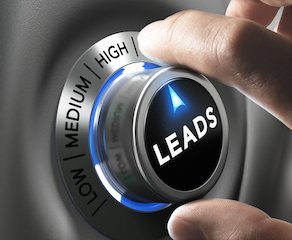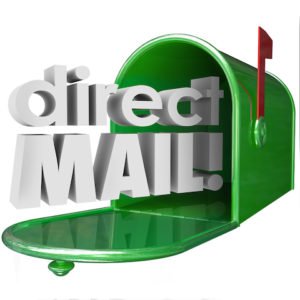One of the most commonly asked questions amongst new final expense agents is, “What are the best final expense leads to use?” And truly, this is THE “million dollar question” to answer, as having the RIGHT kind of leads is one of the most important factors to success in the final expense business.
One can have access to the best final expense carriers and the best commission levels, but none of that matters if you don’t have access to not only the best leads, but also the most consistent and dependable lead source to satisfy your lead demands.
There are two important factors to consider when determining which leads are the best.
First of all, the lead MUST have a track record of success, verified by producing agents. There are leads that work for one agent and nobody else, and there are leads that many final expense agents love to work, yet will still get complaints about ineffectiveness from other agents. In my experience, getting a mix of both good and bad experiences with a lead is a good indication that that lead is a good lead for the agent willing to WORKthem.
When all you hear are one-sided results – whether the results are virtually all good or virtually all bad – it usually means there is something inherently BAD about the lead; however, if a good cross-section of varying results exist then it’s a good sign that the lead is worth giving a shot. Maybe it’s a little cynicism on my behalf, but if I get a good cross-section of complainers along with agents thrilled with the results, then I feel confident about testing the lead source because the guys that are going to do well and work hard are going to probably do the same and succeed with that lead. However, when I hear of everyone LOVING a lead with nobody objecting, I have learned that there usually is some sort of catch to using the lead.
The second important factor is consistency in RECEIVING the leads. For example, a lead source can deliver very strong leads, but if the regularity in receiving those leads is inconsistent, then the smart agent should opt for a lead that can deliver leads on a much more regular level, even if the lead isn’t as strong in quality. The importance of lead consistency cannot be overstated, and that’s why I make this a factor when selecting lead vendors to work with, as agents need to have lead delivery consistency in place to succeed over the long run.
Now that I covered the two fundamental factors regarding selecting both lead types and lead vendors, let’s start the conversation about each final expense lead type, and go into a detailed overview regarding my experiences with each lead.
1. Direct mail final expense leads. If someone were to survey the top 10% producing final expense agents, direct mail final expense leads would be the “bread and butter” lead choice amongst these most successful agents. Direct mail leads offer the best sustainability and consistency in generating quality final expense leads, insomuch that I believe the level of quality for final expense direct mail leads supersedes that of all other types of leads.
However, there are no perfect leads, so what are the downsides of direct mail? The biggest issue with direct mail leads concerns price, not quality. Typically of all lead types, there is a correlation between quality and price. And since direct mail is known for high quality, it only makes sense that the price point is higher than many other types of leads.
Nevertheless, the most successful agents argue the price point is irrelevant because of the return on investment is consistent and always a high multiple of the investment, which is why agents selling final expense usually make a good income on an ongoing basis simply by using direct mail.
One EXTREMELY important factor to consider when researching vendors to purchase final expense leads from is to seriously consider WHAT the lead actually says.The BEST lead card for a brand new agent to use is a lead card that clearly says, “life insurance,” and some reference to “affordability.” Ensuring your final expense lead card has both words in the copy better clarifies in the prospects’ mind that, a) this is life insurance, and b) it is affordable. On average, more respondents will understand that they are sending a card back requesting information about low-cost life insurance, thus, when you sit down with them in a meeting, they’re going to be more likely to buy, all else equal.
The second type of direct mail final expense lead you have access to are what I categorize as the “vanilla” type of lead card. These leads are less specific, meaning there’s less if not zero verbiage about life insurance; instead, the lead card will substitute “life insurance” with “program” or “plan,” and the affordability copy is usually deleted, as well.
The good news is that these “vanilla” leads will generate you more responses; however, the quality of those that respond tends to not be as strong as the more specific leads mentioned before, especially for agents new to selling final expense. On the other hand, veterans experienced in selling final expense typically do fine with these generic leads, simply because they have a command of the business and see many more sales opportunities where new agents do not.
At this point, the main question you should ask yourself is, “Which type of direct mail lead is right for me?” As mentioned earlier, if you are brand new to final expense, do yourself a favor and buy a life insurance lead that has both “life insurance” and “affordability” specifically mentioned in the body copy. If you’re experienced in selling final expense but are suffering diminishing response rates, try a generic lead and see how that goes for a while. Mix it up and see if you experience a difference in a return on your investment.
2. Final expense telemarketing leads. Telemarketing leads are generated when a telemarketer calls a person and solicits interest in information on final expense burial insurance. There is a great variety of telemarketing lead types, and what I want to discuss are the most common telemarketing types as of 2015, so you can learn how each one works and which type may be best for you.
Regarding lead sustainability, given a few conditions on geography, telemarketing leads are a long-term, sustainable lead. If an agent plans on using telemarketing leads over the long term, he needs to have more marketable area available compared to direct mail, simply because the Do Not Call list restricts callable people by about 80%, so more data is required to sustain a campaign. Additionally, telemarketing lead quality is a little bit lower compared to direct mail, and agents generally have to buy more leads to make up for the lower quality. But typically, telemarketing leads are less expensive than direct mail.
Now let’s discuss the different kinds of telemarketing lead options. The first kind of lead is a traditional telemarketing call, where an American or foreign person calls to generate the lead. Telemarketing leads generated by Americans are generally more expensive; however, if you get an English-speaking foreigner, the price is reduced substantially, but so is the quality of the lead. My experience is that a live telemarketer typically runs $18-$25 a lead, and foreign-generated telemarketed leads will be between $5 and $10 a lead.
Another newer and popular telemarketing lead type are so-called “avatar leads.” Avatar leads are really interesting; these leads are pre-recorded responses, statements, and rebuttals, recorded by an American voiceover specialist, and played back by a foreign call center. The call is legitimately and legally dialed by a live person, and instead of caller talking, the caller “speaks” using the recordings.
What are the benefits to using avatar telemarketing final expense leads? First, using third-world labor, the price point is much lower than working with an American telemarketing group. Additionally, conversion ratios are much higher, since the actual act of telemarketing is done in such a manner that there’s little room for human error. The pre-recorded rebuttals and recordings are the same at 9 o’clock in the morning and at 9 o’clock at night, so there is virtually zero deviation in what and how the prospect is being pitched. I jokingly call avatar leads “Terminator leads,” as they never take no for an answer and never tire out or get discouraged.
High conversion ratios, and relying on third-world labor to operate your calling allows for the avatar leads to be significantly less expensive than most traditional telemarketing lead sources. I’ve seen avatar rates as low as $7.50 and as high as $15 a lead. I recommend avatar leads to my agents as they are a great alternative to direct mail leads, if the new agent cannot properly capitalize himself to buy direct mail leads, but has enough to purchase avatar leads.
• Editor’s Note: This article was contributed by Insurance Forums member David Duford (Screen name: Rearden). If you want to add in your $.02 about the best type of leads for new FE agents, please visit this new thread: Choosing the Right Kind of Lead
• More from David Duford: 7 fundamental steps every new final expense agent must follow
3. Self-generated leads. Now that I’ve covered both direct mail and telemarketing leads, let’s finish with discussing what I call self-generated leads. Self-generated leads include cold canvassing door-to-door or over the phone, but the most common self-generated leads are referrals from existing clients. Honestly, as an agent, I’m not very good at remembering to ask for referrals post-sale. However, after several years in the business, I am receiving a consistent source of unsolicited referrals from existing policy holders, and you will, too, if you stick to this business and do a good job for your clients.
Some agents prefer to self-generate leads via cold canvassing. Cold canvassing is not what I would recommend in this business, but if the desire to sell final expense is higher than ability to invest in leads, then have at it!
Some of the most successful agents selling life insurance recommend 20-30 door knocks each day in order to get enough appointments to get several sales a week. Understand that you can’t treat prospecting in a haphazard way; prospecting MUST be done in huge amounts. The same thing can be said for cold canvassing over the phone. Hundreds of calls a day is the only way to generate leads in order to make sales; this is why cold prospecting is not for the weak of heart.
The last method to self-generate final expense leads is one I borrowed from a couple of successful final expense agents called “seminar marketing,” where the final expense agent gives a seminar to a group of seniors about final expense coverage in order to generate leads.
Of all the ways to self-generate leads, giving seminars is my preferred approach for several reasons. First, by standing up and giving information about life insurance to a group of prospects, you immediately establish yourself as the “expert” regarding final expense, and immediately are assumed to be the one who can help those in the audience who are interested in final expense coverage, and you get the opportunity to pitch in front of a group of people, hopefully converting some of those attendees into sales. Second, you are able to speak to a large group of people – typically between 5 and 20 people at once – allowing you to leverage your time more efficiently than in one-on-one sales calls. Third, it’s very inexpensive to conduct a seminar and generate leads; in total, you won’t pay more than $50 total to hold the seminar.
After doing nearly 60 seminars like this over the past year, I have concluded that giving seminars allows you to cheaply convert quality leads without high expenses. However, understand like all lead sources go, your mileage will vary. Some presentations will produce no sales, others will produce one or two sales, while yet others will produce a multitude of sales. As with all lead sources, the secret to consistent results is to do multiple seminars to achieve better sales results.
In summary, while there are a wide variety of lead types, my experience has been that telemarketing leads, direct mail leads, and self-generated leads described above are the bedrock of what works consistently well for top-producing final expense agents. The best way to take action is pick one lead source, commit to mastering final expense, and do as much activity as humanly possible. Ultimately, as I advise all of my final expense agents to do, the goal is to duplicate what the top producing agents do, and that is to start and sustain a consistent source of direct mail final expense leads.
• Editor’s Note: This article was contributed by Insurance Forums member David Duford (Screen name: Rearden). If you want to add in your $.02 about the best type of leads for new FE agents, please visit this new thread: Choosing the Right Kind of Lead
• More from David Duford: 7 fundamental steps every new final expense agent must follow
David Duford (Insurance Forums screen name “Rearden”) is the owner and operator of Final Expense Agent Mentor. He specializes in training both newly licensed agents and experienced agents on how to succeed in the final expense burial insurance market. You can learn more about his Mentorship Program athttp://www.FEAgentMentor.com.













